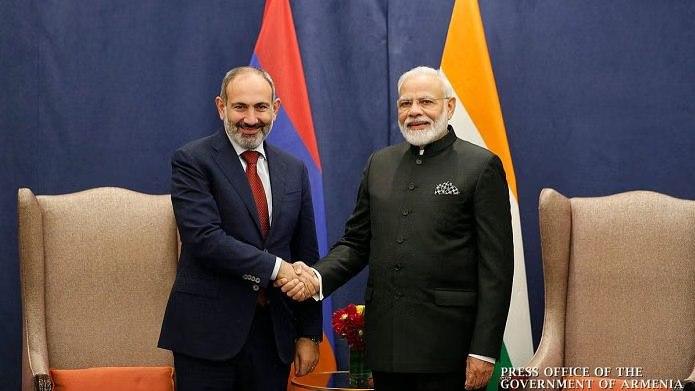
Armenia-India cooperation could become a counterbalance to the growing Turkey-Azerbaijan axis in the Caucasus, says The Print
Few could have predicted that within a mere three to four years, India’s presence in the South Caucasus would grow so decisively that it would emerge as Armenia’s largest defense supplier, The Print writes.
As noted, with aspirations for a larger role in both geopolitics and geo-economics, India has begun to engage with new regions—seizing opportunities presented by the constant flux of global power dynamics.
India’s relationship with Armenia is a prime example of this shift. Long known as the world’s largest arms importer, and often struggling to modernize its indigenous defense sector, India found in Armenia a rare partner—one willing to procure nearly every major weapon system developed domestically, the website notes.
As Russia—Armenia’s formal ally through the Collective Security Treaty Organization (CSTO)—failed to extend meaningful security guarantees during the Nagorno-Karabakh conflicts in 2020 and 2023, while simultaneously arming Azerbaijan, a frustrated Yerevan was forced to look elsewhere for support.
Russia’s deepening entanglement in Ukraine further diverted its attention from its traditional sphere of influence, leaving a vacuum that India stepped into with both urgency and strategic foresight.
While eager to modernize its defense capabilities, Armenia lacked the financial means to procure costly Western platforms. Its nascent defense industry was not yet equipped enough, just beginning to specialise in niche technologies. In a pragmatic move, Armenia turned to India.
“Indian weapon systems, though not as expensive as their Western counterparts, offered reliable and effective solutions. Within just two years, by 2023, India had appointed a Defense Attaché to Yerevan and concluded multiple defense agreements worth millions of dollars. These covered a wide spectrum of indigenous platforms, from the Akash surface-to-air (SAM) missile systems and SWATHI weapon-locating radars to the advanced towed artillery gun system (ATAGS) and large consignments of ammunition. The only notable exception has been the BrahMos missile system—co-developed with Russia—which Yerevan has so far avoided, likely due to a strained relationship with Russia and Moscow’s closeness to Baku,” The Print writes.
The article noted that as the Armenia-Azerbaijan conflict currently lies in a fragile truce, and peace negotiations continue, now is the time for India to mature its defense partnership with Armenia—building resilience and establishing India as a reliable long-term partner. Several strategic avenues lie ahead: continuing direct weapons sales; integrating Armenian start-ups into “Make in India” and “Make for the World” initiatives; and cooperating within broader security frameworks.
One such avenue is the trilateral cooperation mechanism. While India is Armenia’s largest defense supplier, France holds the second position. Given India and France’s robust defense ties and a shared industrial roadmap, co-producing and co-exporting to third countries could be a mutual win. Beyond France, Armenia’s growing defense ties with Greece and Cyprus—especially following their 2024 trilateral agreement—indicate a broader alignment aimed at counterbalancing Turkish and Pakistani influence in the region.
In the evolving geopolitical landscape of the Caucasus, there is growing potential for deeper cooperation between India, France, and Greece to support Armenia’s security architecture.
At present, Armenia is navigating complex negotiations for a peace agreement with its neighbors.
From India’s perspective, the stakes are both economic and strategic. The International North-South Transport Corridor (INSTC), which begins in Mumbai and extends through Iran’s Bandar Abbas to the Persian Gulf, continues northward through Baku en route to Moscow. India has also been pushing for connecting INSTC to another Iranian port, Chabahar, which has significant Indian investments. This corridor stands to gain significantly from new trade links that include Armenia.
India and Iran, in cooperation with Armenia, have been promoting this under a trilateral framework. Specifically, connectivity through Armenia’s southern Syunik province not only enhances regional trade dynamics but also offers India a counterweight to the growing Turkey-Azerbaijan axis in the Caucasus.



